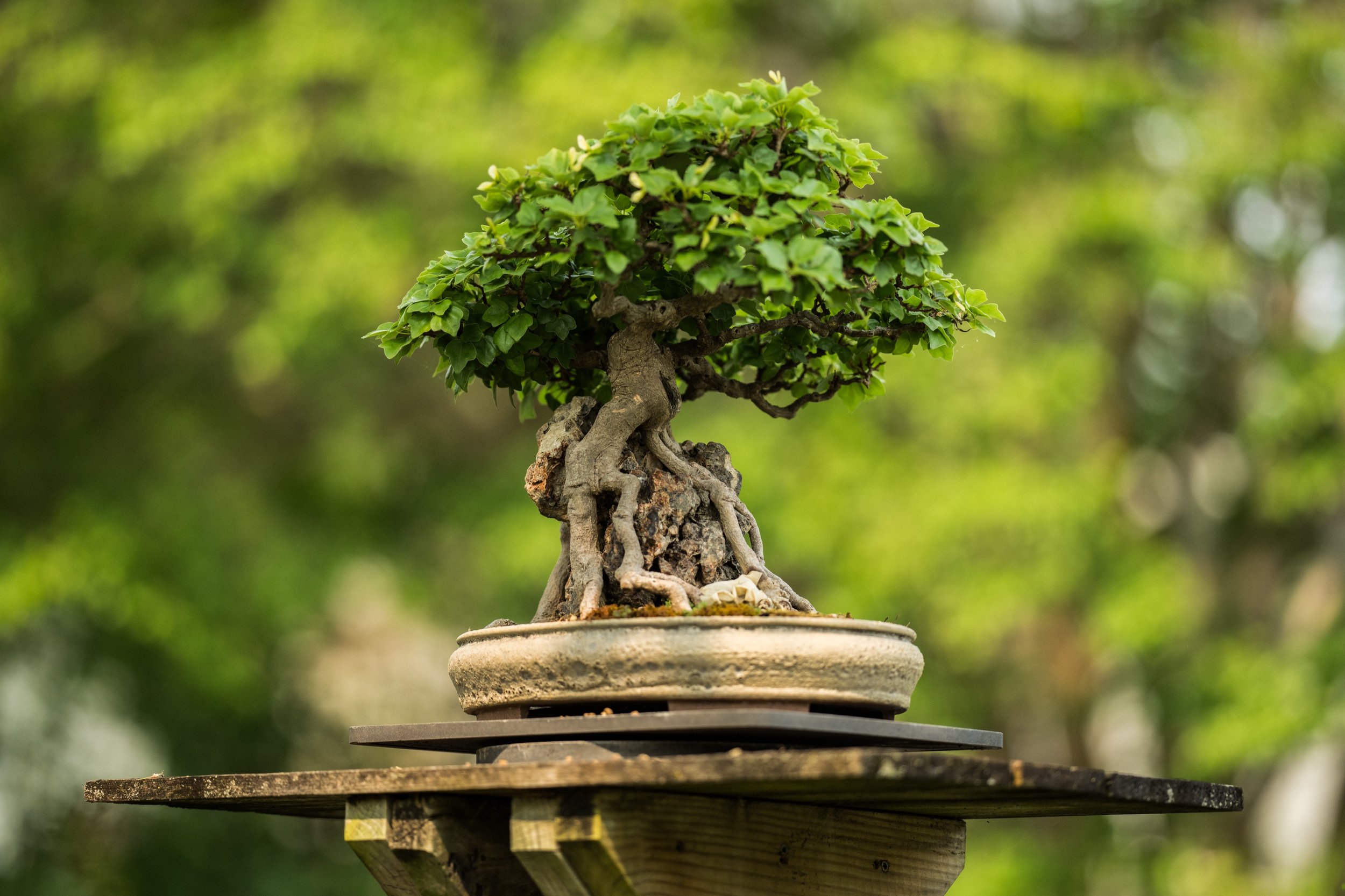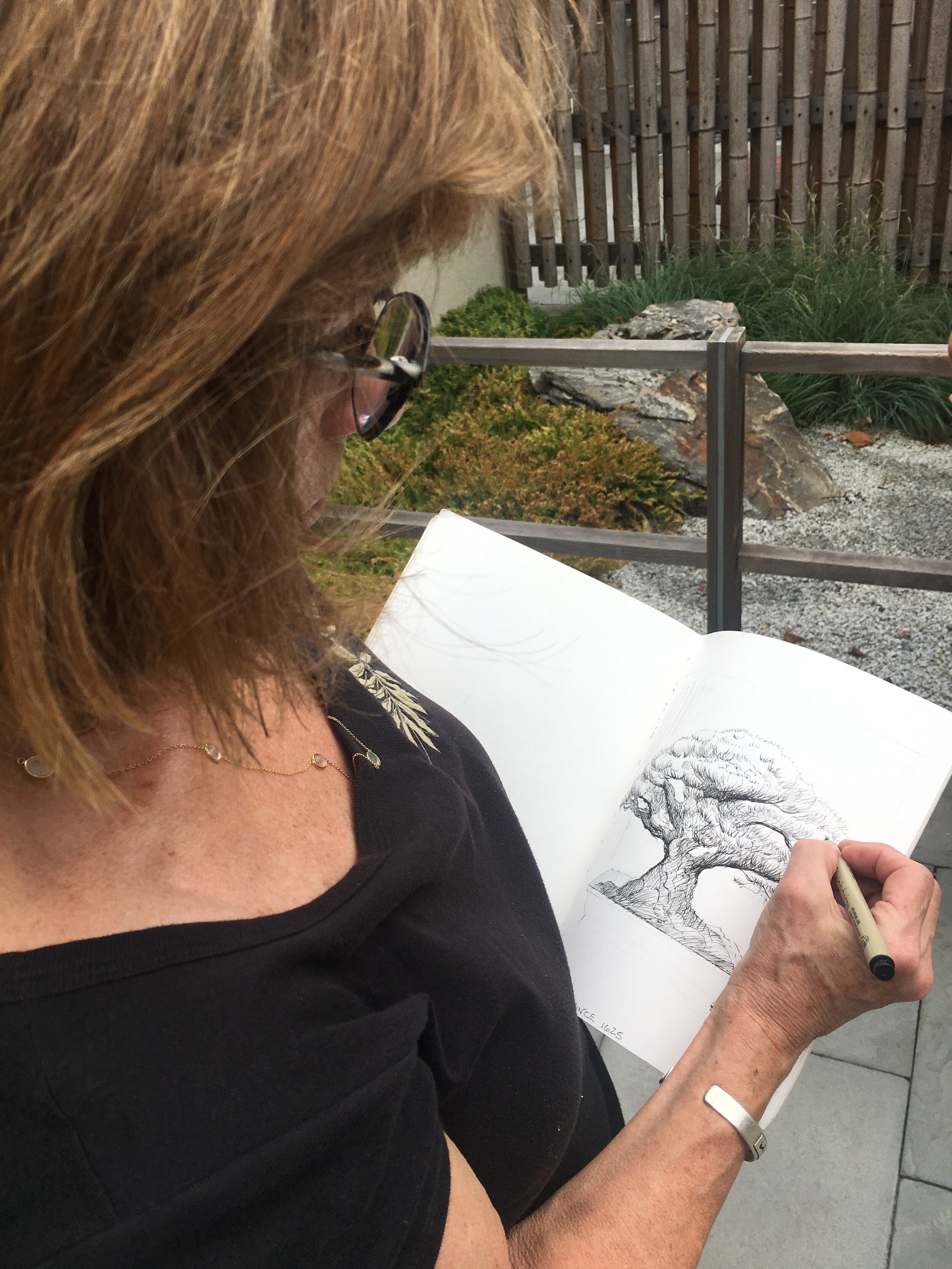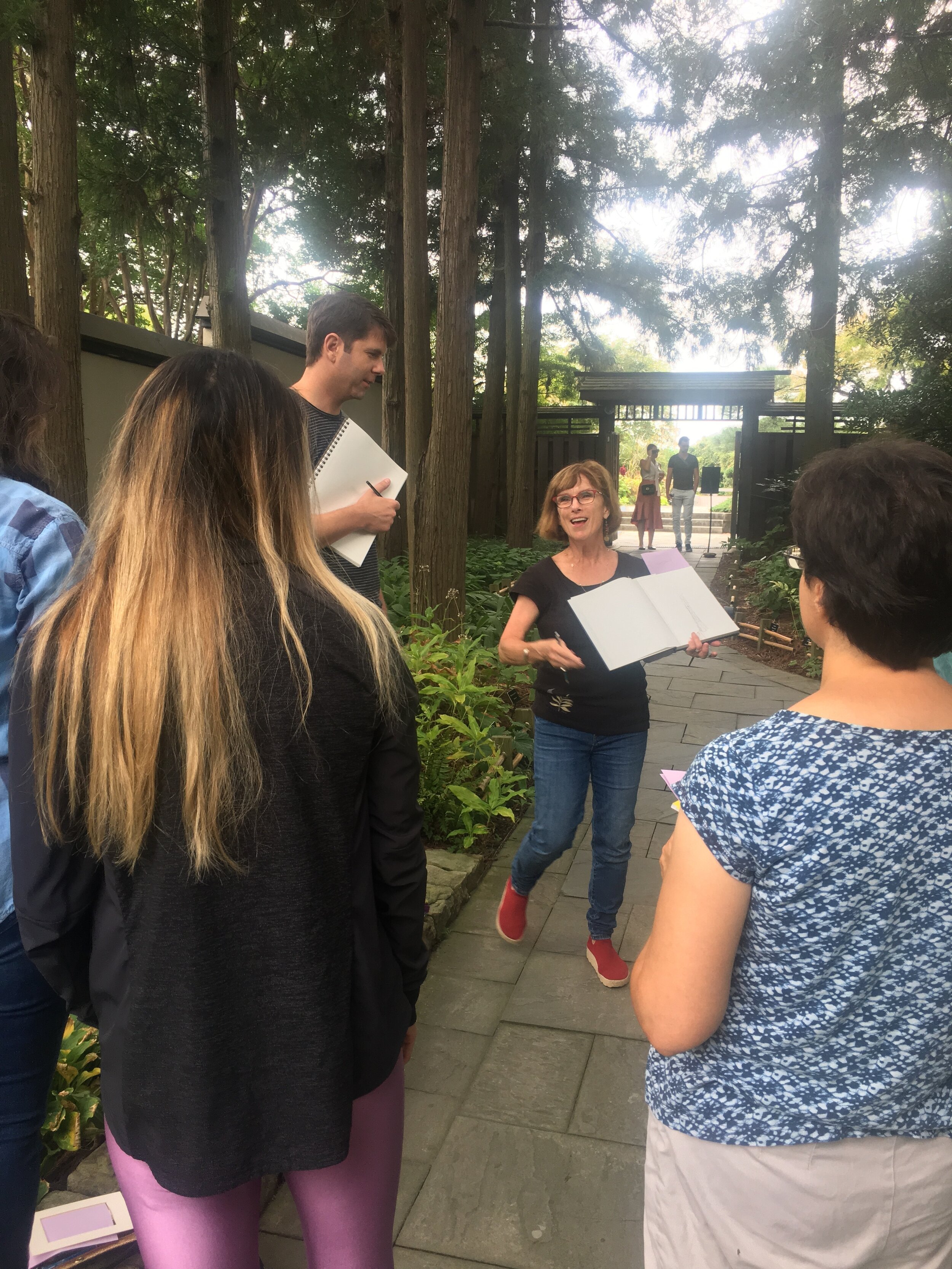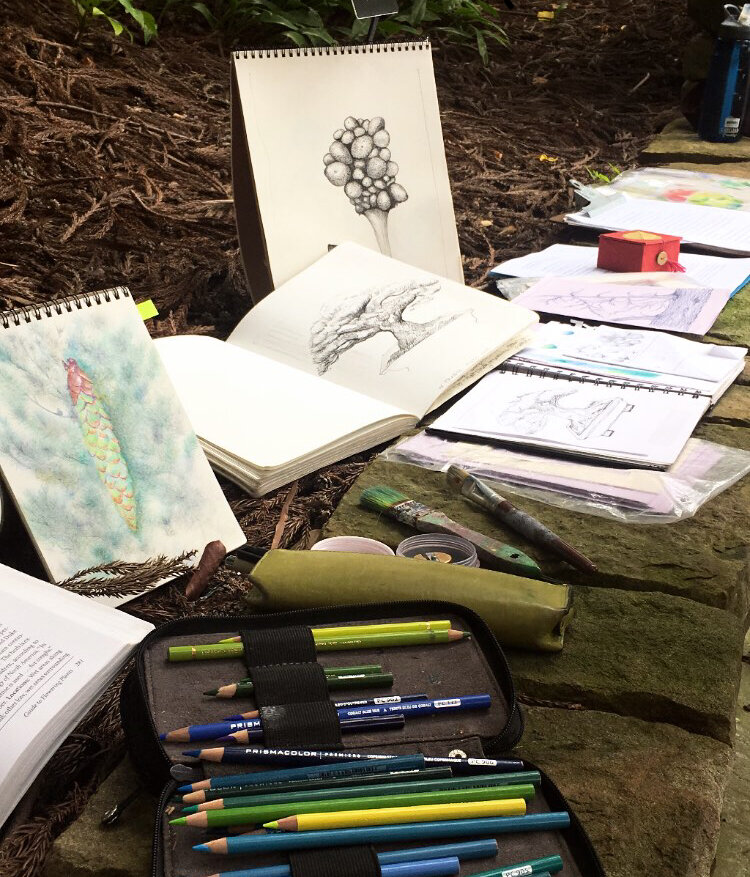While many bonsai are often plucked from the ground after natural growth, some trees are specially created. For example, the Chinese banyan – or Ficus microcarpa ‘Kaneshiro’ – is the incredible cross-pollination work of the tree’s donor, Haruo “Papa” Kaneshiro.
Museum Curator Michael James said Kaneshiro, who lived in Hawaii, is known as the father of tropical bonsai for his work with tropical trees long before they were considered for bonsai material by the mainstream. Kaneshiro was honored among other notable bonsai figures, like John Naka and Ted Tsukiyama at the International Bonsai Convention in Hawaii and was one of the first members to start the World Bonsai Friendship Federation.
“One of the reasons Kaneshiro is credited with being the father, king or papa of tropical bonsai is because he was so willing to share the secrets of bonsai with the rest of the world,” James said.
No Ordinary Tree
The Chinese banyan is Kaneshiro’s unique cross between Ficus microcarpa ‘retusa’ and Ficus microcarpa ‘crassifolia.’ While figs on a ficus generally grow to the size you might see in a grocery store, the fruit on a Ficus microcarpa usually range from ⅛ inch to ¼ inch, James said.
The flowers of Ficus microcarpa reside inside of the fruit and never open, so small wasps have to crawl inside of the fruit to pollinate the flowers. Kaneshiro’s process created the Ficus microcarpa ‘Kaneshiro’ bonsai that remains at the Museum today.
Root Over (Lava) Rock
James said this Chinese banyan has been in training since 1975, but Kaneshiro planted the tree in the ground over a slab of lava rock in 1982. This unconventional planting method restricted the tree from growing directly into the ground – the roots had to hit the lava slab first and then grow around the rock.
“These ficus trees grow so quickly that if you put one straight in the ground in Hawaii it becomes a 100-foot tree in no time,” he said.
By the time Kaneshiro pulled the banyan from the ground and potted it in 1987, the tree’s roots had wrapped around the lava rock so tight that the rock became part of the composition, James said.
“Now it’s a root over rock, or root over slab, as if it were growing on a volcanic hillside in Hawaii,” James said. “You can see the volcanic rock jutting out like a volcanic ledge.”
A Resting Place
The Chinese banyan came to The National Bonsai & Penjing Museum in 1990, finding a home in a pavilion named for its donor: The Haruo Kaneshiro Tropical Conservatory. Kaneshiro has also donated a black pine held in the North American Collection.
James said the banyan grows fast, all year round, meaning volunteers have to prune back the banyan’s shoots and leaves about once a week.
“On a Japanese white pine, pruning might be done once a year, but banyans grow out of bonsai shape and their leaves become too large very quickly,” he said.
As a tropical tree, the banyan thrives in warm climates like Florida, Southern China or Vietnam and boasts a soft wood, so it cannot freeze.




























